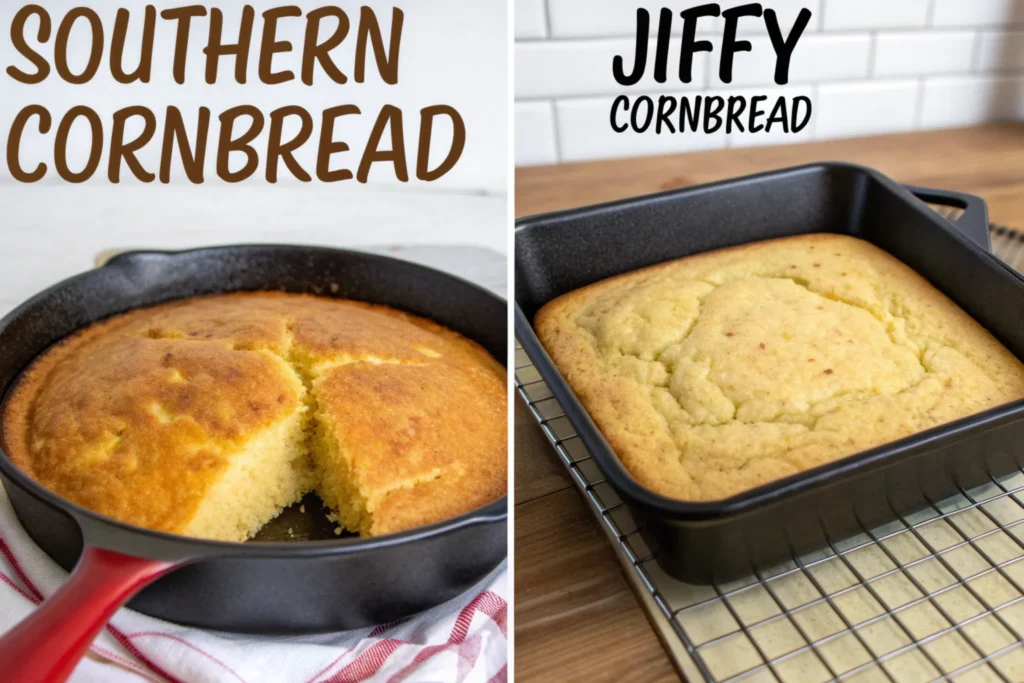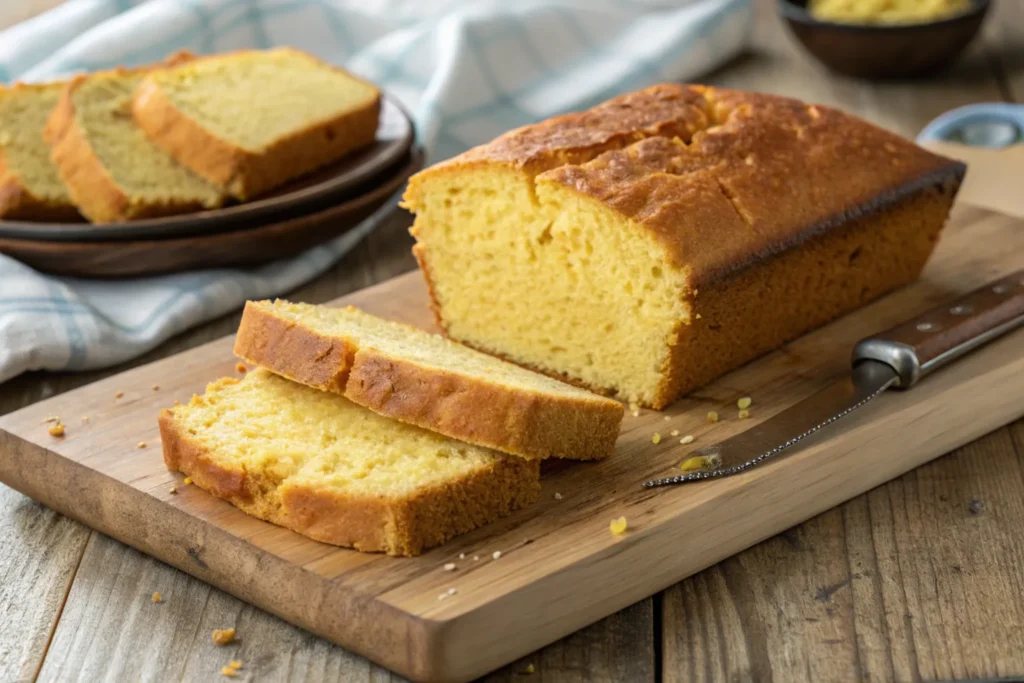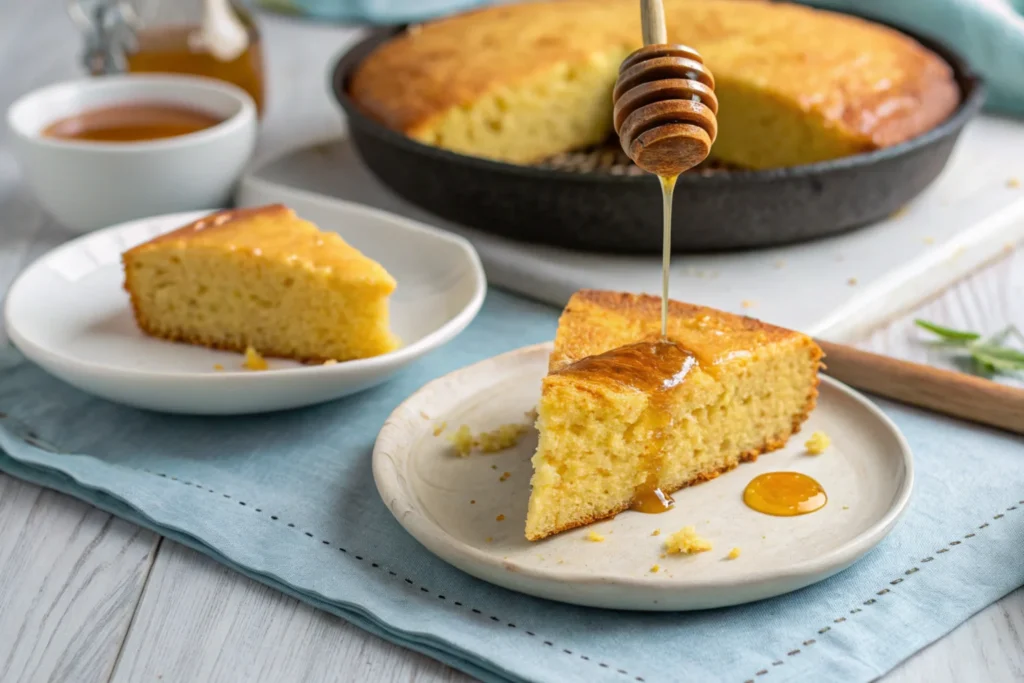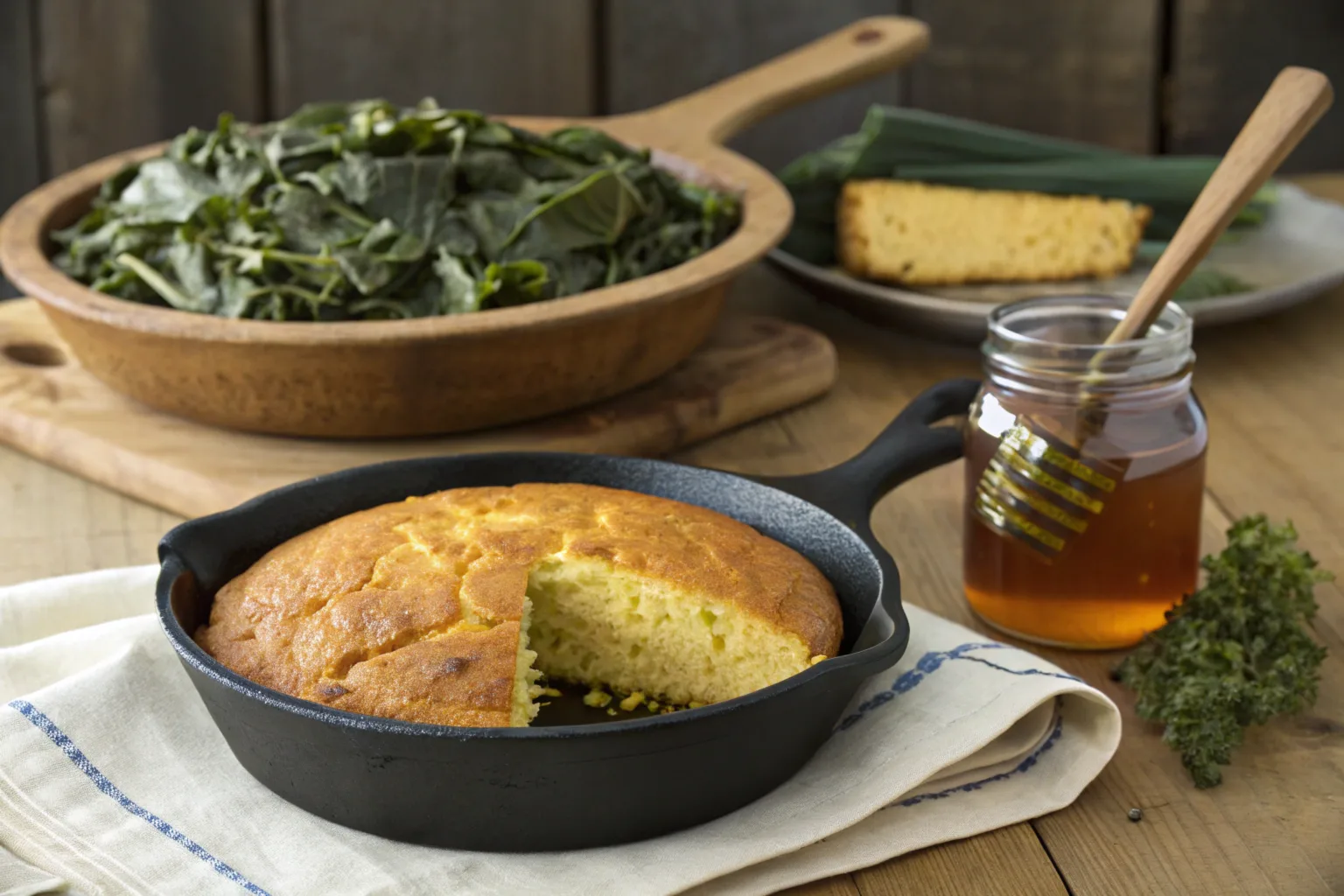Cornbread is more than just a side dish in the South it’s a symbol of tradition, hospitality, and culinary pride. Yet one question often stirs up debate: Why do Southerners not put sugar in cornbread? For many, the answer lies in history, practicality, and a dedication to preserving the savory essence of this iconic dish.

In this article, we’ll explore the roots of Southern cornbread, why sugar is often omitted, and how this choice reflects the region’s unique culinary philosophy. Whether you’re a cornbread purist or open to sweeter variations, understanding this tradition will deepen your appreciation for this beloved staple.
The History of Southern Cornbread
To understand why Southern cornbread is traditionally savory, it’s essential to explore its origins and evolution.
Cornbread’s Roots in Indigenous and Early Settler Cooking
Cornbread traces its history to Indigenous peoples, who ground corn into meal to create simple breads. Early settlers in the South adopted this practice, relying on cornmeal as a cheap and accessible ingredient. Sugar wasn’t a staple in these early recipes, as it was often expensive and reserved for special occasions.
The Evolution of Cornmeal in the South
Over time, Southern cooks refined their cornbread recipes, prioritizing functionality and flavor. They used coarser, stone-ground cornmeal, which retained the natural sweetness of the corn. This made adding sugar unnecessary and even redundant. Modern recipes like Southern cornbread with beef tallow still reflect this dedication to simplicity and authenticity.
Why Sugar Became a Northern Addition
In Northern states, cornbread evolved differently. Finer cornmeal, combined with a preference for sweeter baked goods, led to the addition of sugar. Recipes like those explored in Southern Cornbread vs. New York Cornbread highlight these regional differences and their cultural significance.
The Southern Philosophy: Cornbread Should Be Savory
For Southerners, cornbread isn’t just food it’s a tradition rooted in simplicity and practicality. Here’s why savory cornbread remains the gold standard in the South.

Highlighting Cornmeal’s Natural Sweetness
Southern cornbread celebrates the natural flavor of cornmeal without masking it with added sugar. Stone-ground cornmeal, a staple in traditional recipes, carries a subtle, earthy sweetness that shines through when paired with ingredients like buttermilk and turkey bacon grease. answering the question, ‘Why do Southerners not put sugar in cornbread?’ This approach respects the ingredient’s authentic flavor without overpowering it with added sweetness. By cutting out sugar, Southern chefs allow these natural flavors to take center stage.
The Practicality of Keeping Cornbread Simple
Cornbread has historically been a practical dish, designed to complement hearty meals like stews and casseroles. Omitting sugar kept it affordable and versatile. Today, recipes like cornbread dressing with chicken or vegan cornbread dressing show how this simplicity remains a cornerstone of Southern cooking.
How Savory Cornbread Complements Southern Cuisine
Savory cornbread pairs perfectly with the rich, bold flavors of Southern dishes. Whether served alongside rotisserie chicken casserole stuffing or crumbled into a chicken dressing casserole, its understated flavor enhances the meal rather than competing with it.
Modern Takes on the Sugar Debate
While tradition often dictates that Southern cornbread should be savory, modern cooks and evolving tastes have sparked debates about adding sugar to this iconic dish.

Can Sugar Be Added Without Losing Tradition?
Some Southern cooks experiment with a touch of sugar to balance flavors without straying too far from tradition. Adding a tablespoon of honey or brown sugar can enhance the natural sweetness of the cornmeal, especially in recipes like Jiffy cornbread dressing, where a slight sweetness complements savory ingredients.
How Regional Preferences Shape Cornbread Recipes
Regional preferences play a significant role in cornbread variations. While Southerners fiercely defend their savory recipes, influences from Northern and Midwestern states have led to the rise of hybrid versions. These recipes blend sweetness with traditional Southern elements, creating a cornbread that appeals to diverse palates.
Balancing Sweet and Savory in Cornbread
Finding the perfect balance between sweet and savory can open new culinary possibilities. For example, pairing slightly sweetened cornbread with spicy dishes like chili or barbecue offers a harmonious contrast. Savory versions, like those used in cornbread stuffing without eggs, excel as a base for rich, flavorful dishes.
How to Make Traditional Southern Cornbread
If you’re ready to embrace the timeless tradition of savory Southern cornbread, here’s a simple recipe and tips to help you create the perfect loaf.
The Key Ingredients for Authentic Southern Cornbread
- Cornmeal: Stone-ground cornmeal is the heart of authentic Southern cornbread. Its coarser texture and natural sweetness make sugar unnecessary.
- Buttermilk: This tangy liquid reacts with baking soda to create a tender crumb and a rich flavor.
- Fat: Traditional recipes often use turkey bacon grease or beef tallow for added flavor and a golden, crispy crust. Check out this Southern cornbread recipe with beef tallow for inspiration.
- Eggs: They provide structure and help bind the ingredients together.
Step-by-Step Instructions for a Classic Recipe
- Preheat Your Skillet: Place a cast-iron skillet in the oven and heat it to 425°F. Preheating ensures a crispy crust.
- Mix the Dry Ingredients: Combine 1 cup of stone-ground cornmeal, ½ cup of all-purpose flour, 1 teaspoon of baking powder, and ½ teaspoon of baking soda in a bowl.
- Prepare the Wet Ingredients: In a separate bowl, whisk together 1 cup of buttermilk, 1 large egg, and 2 tablespoons of melted turkey bacon grease or tallow.
- Combine and Stir: Gradually add the wet ingredients to the dry mixture, stirring until just combined. Avoid overmixing to prevent dense cornbread.
- Grease the Skillet: Carefully remove the preheated skillet from the oven and grease it with turkey bacon grease or tallow.
- Bake: Pour the batter into the hot skillet and bake for 20-25 minutes or until the top is golden brown and a toothpick inserted in the center comes out clean.
- Cool and Serve: Allow the cornbread to cool slightly before slicing. Serve warm alongside dishes like cornbread dressing with chicken.
Tips for Perfect Cornbread Without Sugar
- Don’t Overmix: Overmixing can make the cornbread dense and tough. Stir just until the ingredients are combined.
- Use a Hot Skillet: Preheating the skillet ensures a crispy, golden crust a hallmark of traditional Southern cornbread.
- Experiment with Fats: For unique flavors, try using turkey bacon grease, beef tallow, or even butter. Each adds its own twist to the recipe.

Traditional Southern Cornbread Recipe (No Sugar)
Ingredients
Equipment
Method
- Place a cast-iron skillet in the oven and preheat to 425°F (218°C).
- In a mixing bowl, whisk together cornmeal, flour, baking powder, and baking soda.
- In a separate bowl, combine buttermilk, egg, and melted fat (grease or tallow).
- Pour the wet ingredients into the dry mixture and stir just until combined. Do not overmix.
- Carefully remove the hot skillet from the oven. Add a small amount of fat to coat the skillet.
- Pour the batter into the hot skillet. Bake for 20–25 minutes or until golden and a toothpick inserted in the center comes out clean.
- Cool slightly before slicing. Serve warm with butter or as a savory side dish.
Nutrition
Notes
Tried this recipe?
Let us know how it was!Conclusion
The question, “Why do Southerners not put sugar in cornbread?”, is rooted in history, tradition, and practicality. Southern cornbread highlights the natural sweetness of stone-ground cornmeal, focusing on simplicity and a savory flavor that pairs beautifully with rich Southern dishes. From its Indigenous origins to its role in modern Southern cuisine, cornbread continues to reflect the region’s dedication to authentic, uncomplicated cooking.
Whether you stick to a traditional savory recipe or experiment with a touch of sweetness, the versatility of cornbread makes it a timeless favorite. For more ideas, explore recipes like cornbread dressing with chicken or Jiffy cornbread dressing to discover how cornbread can shine in any meal.
By honoring the roots of Southern cornbread, you can appreciate its role as more than just a side—it’s a celebration of Southern heritage and flavor.
Happy cooking, and enjoy every bite of your savory creation!
LET’S STAY CONNECTED! FOLLOW ME ON:
Tried this recipe? I’d be thrilled to see your take on it! Snap a pic and tag me @Sweftyrecipes so I can share your delicious creations with our foodie community.
→ FACEBOOK | INSTAGRAM | PINTEREST
FAQs About Southern Cornbread and Sugar
Do Southerners put sugar in their cornbread?
Traditionally, Southerners do not add sugar to their cornbread. The focus is on highlighting the natural sweetness of the cornmeal itself. However, modern adaptations sometimes include a small amount of sugar for those who prefer a balanced flavor.
Why isn’t Southern cornbread sweet?
Southern cornbread isn’t sweet because it stays true to its roots as a savory, practical dish. Historically, sugar was expensive and unnecessary due to the natural flavor of freshly ground cornmeal. This tradition continues in most authentic recipes.
Does cornbread require sugar?
No, cornbread doesn’t require sugar. While Northern-style recipes often include sugar for sweetness, Southern cornbread is traditionally savory and doesn’t depend on added sugar to enhance its flavor.
Did cornbread originally have sugar?
No, early cornbread recipes did not include sugar. Indigenous peoples and early settlers made cornbread with simple ingredients like cornmeal, water, and salt. Sugar became a common addition in Northern recipes as refined cornmeal and sweeter tastes gained popularity.
What’s the difference between Southern cornbread and regular cornbread?
Southern cornbread is savory, dense, and cooked in a cast-iron skillet, creating a crispy crust. Regular (or Northern) cornbread is typically sweeter, lighter, and baked in a cake pan, often with a more cake-like texture.
Does Jiffy cornbread have added sugar?
Yes, Jiffy cornbread mix contains added sugar, giving it a slightly sweet flavor. It’s a popular choice for recipes like Jiffy cornbread dressing that blend sweet and savory elements.
What’s the difference between white and yellow cornbread?
The main difference lies in the type of cornmeal used. Yellow cornbread is made with yellow cornmeal, which has a stronger corn flavor and natural sweetness. White cornbread uses white cornmeal, resulting in a milder flavor and lighter color.

Comments are closed.